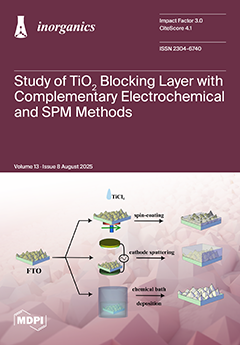In recent years, researchers have made great efforts to develop effective semiconductor photocatalysts to harness the visible spectrum of sunlight in photocatalytic applications. Bismuth vanadate, BiVO
4, has emerged as one of the most promising candidates for photocatalytic applications among the few
[...] Read more.
In recent years, researchers have made great efforts to develop effective semiconductor photocatalysts to harness the visible spectrum of sunlight in photocatalytic applications. Bismuth vanadate, BiVO
4, has emerged as one of the most promising candidates for photocatalytic applications among the few non-titania-based visible-light-driven semiconductor photocatalysts. BiVO
4-based structures are intensively studied due to their exceptional ionic conductivity, photocatalytic behavior under ultra-violet and visible light, dielectric properties, ferroelastic and paraelastic phase transitions, and strong pigmentation. BiVO
4 occurs in nature in three crystalline structures: orthorhombic pucherite, tetragonal dreyerite (tz), and monoclinic clinobisvanite (ms). All three crystal structures of BiVO
4 are n-type semiconductors with corresponding energy gap values of 2.34, 2.40, and 2.90 eV, respectively. Different methods of synthesis have been reported for the preparation of BiVO
4 structures of varying morphologies and sizes. The morphology of BiVO
4 is strongly influenced by the preparation method and reaction parameters. A comprehensive systematic study of developments, preparation methods, structure, properties, and advances in different applications over the past decades in research on BiVO
4-based structures will be described. Finally, the current challenges and future outlook of BiVO
4-based structures will be highlighted, in the hope of contributing to guidelines for future applications.
Full article





